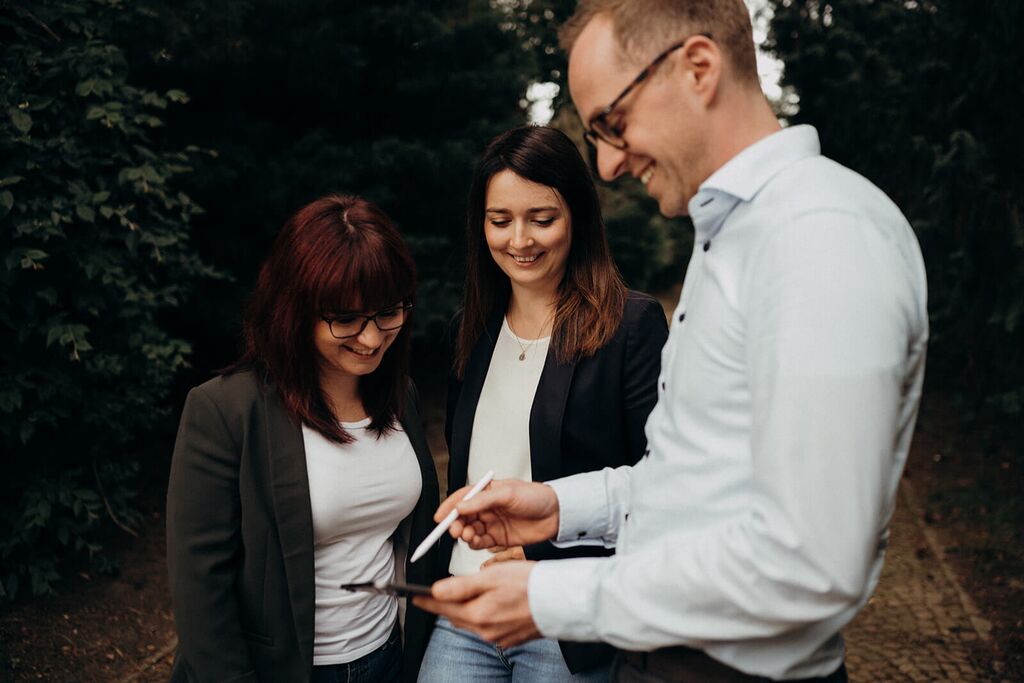
Environment
How we make an active contribution to environmental protection.
CO2e emissions
Emissions - for Peppermint as a production company they are key. In the Corporate Carbon Footprint, we record direct and indirect emissions annually and convert them into CO2 equivalents. Our aim is to make emissions along the entire value chain more transparent - from our own sites and upstream processes to selected downstream areas. Based on this, we implement targeted measures to actively reduce emissions.
To this end, we only consider emissions in Scopes 1, 2 and 3. Scope 1 relates to emissions that are generated directly and on our factory premises. The main source of these emissions is the combustion of heating oil and natural gas to generate saturated steam. Scope 2 relates to emissions caused by electricity generation and transport through the electricity grid. The procurement of electrical energy is crucial here.
Raw materials and their logistics account for the majority of our Scope 3 emissions. We cannot influence these directly and therefore play a separate role in our CO2 balance. In order to reduce the corporate carbon footprint including all raw materials, it is necessary to take action along the entire supply chain. However, the market does not always offer an alternative with a lower CO2e footprint. For this reason, we want to work with our suppliers to develop a strategy for reducing Scope 3 emissions
Greenhouse gas emissions
Emissions of the Peppermint Group according to the Greenhouse Gas Protocol (GHG)
SCOPE 3
indirect emissions
- Use of wool, cotton, chemicals
- Packaging
- Transport from the supplier to us
- Commute of our employees
- Textile waste, paper/cardboard, residual waste, ...
- Business trips of our employees
- Water for dyeing and sizing
- Capital goods
SCOPE 2
indirect emissions
- Power supplied
- District heat
- Fuels (electric)
SCOPE 1
direct emissions
- Heat (natural gas/heating oil)
- Fuels (gasoline/diesel)
- Refrigerant
upstream operations
Scope 3:
indirect emissions in the upstream supply chain
Peppermint
Scope 1:
direct emissions generated by production of our facilities
Scope 2:
indirect emissions generated at the power plant.
SCOPE 3
indirect emissions
- Use of wool, cotton, chemicals
- Packaging
- Transport from the supplier to us
- Commute of our employees
- Textile waste, paper/cardboard, residual waste, ...
- Business trips of our employees
- Water for dyeing and sizing
- Capital goods
upstream operations
Scope 3:
indirect emissions in the upstream supply chain
SCOPE 2
indirect emissions
- Power supplied
- District heat
- Fuels (electric)
Peppermint
Scope 1:
direct emissions generated by production of our facilities
Scope 2:
indirect emissions generated at the power plant.
SCOPE 1
direct emissions
- Heat (natural gas/heating oil)
- Fuels (gasoline/diesel)
- Refrigerant
CO2e emissions Scope 1 und 2
8.211 tons: These CO2e emissions are within Peppermint's direct sphere of influence and therefore within our focus for the upcoming savings measures. Our energy procurement is the main source and therefore also the area in which we want to take measures first. Primarily, this can be achieved by switching our energy sources to lower CO2e alternatives, but reducing our electricity, gas and oil purchases also has a positive effect on the balance.
PEPVISION
Reduction of Scope 1 and Scope 2 CO2e emissions by 90 % by 2040 compared to the base year 2019

How are we achieving this goal? In addition to the various technical savings projects, such as new investments in machinery, we switched our energy procurement at the beginning of 2022. We now purchase green electricity at four out of six locations, covering around 40 per cent of our electricity requirements. This will enable us to reduce our CO2e emissions by around 20 percent.
The next major challenge is the substitution of fossil fuels in steam generation for our production processes.
CO2e emissionen Scope 1, 2 and 3
In order to achieve our goal of a net zero corporate group, we take into account not only the emissions at our own sites but also the upstream and selected downstream emissions in the supply chain (Scope 3).
74.521 t
Our production materials and consumables are among our biggest sources of emissions. Together with our suppliers, we are investigating whether more climate-friendly alternatives are available at cost-covering prices. We also want to consider and reduce their Scope 1 and 2 emissions. In this way, we can make a positive contribution to emissions throughout the entire supply chain.
PEPVISION
Net zero CO2e emissions by 2050

The effects of climate change are already being felt today - by people, markets and ecosystems worldwide. Science and society agree: to limit global warming to 1.5 °C, decisive action is needed now. The Science Based Targets initiative (SBTi) shows the way: greenhouse gas emissions must be significantly reduced by 2030 and completely reduced to net zero by 2050.
We take responsibility. With our vision, we focus on transparency, transformation and acting in partnership. Our PepVisions reflect education, dialogue and bold change - within our Group and along the entire supply chain. This is how we contribute to the global Net Zero future.

"We're thinking about the future: by being careful with our environment and its resources."
Florian Lieberwirth
Sustainability Team
Energy
In 2024, our electricity procurement fell to 46.1 GWh. Various base load effects have moderately slowed progress on our target path this year.
Peppermint is committed to reducing its electricity consumption and the associated energy-related output. Modern, energy-efficient production machines and support processes such as compressed air generation play a decisive role in this.
It is not always possible to increase efficiency through a replacement investment. For this reason, we are optimising our existing systems in accordance with the ISO 50001 energy management standard and have set ourselves the goal of preventing unavoidable waste heat from escaping unused into the environment. To generate hot process water or support heating systems, we use flash steam from the dyeing process or warm exhaust air from compressed air generation.
We introduced an energy management system more than ten years ago - and set up our energy team at the same time. It is staffed by a diverse team at our sites and has a senior management representative. This allows us to utilise synergies, monitor existing systems with key figures and evaluate new energy-saving projects.
PEPVISION
Continuous reduction of specific energy consumption

As part of our holistic energy management programme, we record and evaluate not only electricity consumption but also site-specific heat generation. Based on these analyses, we develop transformation paths for decarbonisation, in particular to reduce the use of fossil fuels. In addition, we continuously implement measures to increase efficiency and reduce specific energy consumption.
Water
PEPVISION
Continuous reduction in specific water withdrawal

Our processes use a lot of water, which is significantly influenced by our dyeing process. In addition to optimised production processes, we focus on innovative water-conserving methods to continuously reduce these amounts. Furthermore, we cannot completely avoid waste water. We therefore regard waste water as a resource that we want to return to the process.
We recognise that simply recording the amounts of water withdrawal is not enough. In future, we will therefore consider the entire use of water in our processes - from extraction to recycling. In this way, we are creating the basis for effective savings measures and making our contribution to protecting water as a resource.
Waste
PEPVISION
Reduction of specific waste generation by 40 % by 2030 compared to the base year 2019

Minimising the amount of waste: This goal is very important to us. Regular waste analyses, uniform separation of the materials used and the greatest possible recycling of materials are our basic rules. We work together with partner companies that reuse residual fibres.
Our waste generation in 2024 totalled 825,457 kg. This represents an improvement compared to previous years. We are endeavouring to maintain this trend.
Paper
PEPVISION
Reduce paper consumption by 50% by 2030 compared to the base year 2019

We are further expanding the digitalisation of work processes at all locations. Through digital working methods and modern document management, we are making our way towards a paperless office. We compensate for the unavoidable use of paper by using sustainably certified products.
We want to further reduce our paper consumption. We see further potential in our production areas. We also want to push ahead with digitalisation there.
